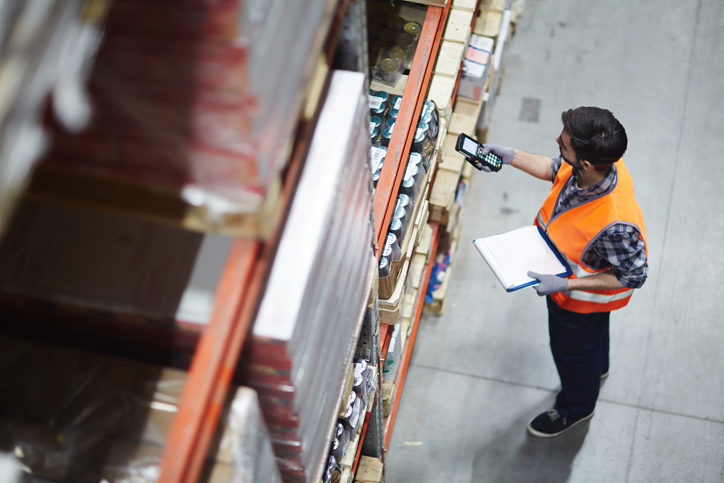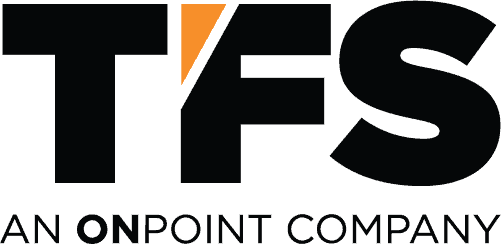 Many companies have migrated to “just-in-time” inventory management to optimize their production lines, but it’s safe to say that the last few years have made that ultra-low inventory strategy much more challenging.
Many companies have migrated to “just-in-time” inventory management to optimize their production lines, but it’s safe to say that the last few years have made that ultra-low inventory strategy much more challenging.
But moving back to an inventory-heavy “just-in-case” plan can be costly and cumbersome, especially when you have to rethink almost everything about your facility. So, what’s the solution?
For manufacturers facing supply chain shortages and fluctuating production demands, the answer may rest in a hybrid of “just-in-time” planning and “just-in-case” strategies.
“What we’re finding now is that our clients want to have excess parts and supplies on hand so their manufacturing lines don’t shut down,” says Mike Quimby, Chief Operating Officer, TFS, an OnPoint Group Company. “That’s not to say they’re stocking up for years to come, but they’re making sure they won’t face the costly event of shutting down operations while they wait on vital materials.”
Even still, while supply chain stressors have motivated manufacturers to build reserves of the components they need, the days of “just-in-time” are far from numbered. Instead, the need to stay nimble and brace for supply chain shortages is prompting something of an evolution.
“Many manufacturers have invested a lot in the parts and supplies they need for a just-in-time strategy while also leveraging their existing warehouse footprints to build up more manufacturing equipment and less storage space,” says Quimby. “That’s not going to change. What is changing, however, is the fact that they now also want more space to carry the additional inventory and supplies they need to secure their production lines.”
“That’s where finding solutions for those space issues becomes important,” he adds.
Going vertical
Stockpiling vital manufacturing parts and supplies—at least to some degree—is often a necessary move given ongoing supply chain issues. However, it means finding extra space and risking excess inventory.
“Carrying additional stock is always risky,” says Quimby. “For one, you’re creating more congestion in the warehouse, and secondly, you’re running the risk of carrying products that become obsolete or have defects. So while it makes sense to carry extra product, you have to be mindful of how you store and manage those excess goods.”
There are ways to make it work, he adds. In warehouses where horizontal racking space is in short supply, manufacturers can consider looking up.
“When manufacturers run out of space for additional inventory, their first thought is that they need to lease more warehouse space and hire more people. That’s when we typically come in and show them solutions for optimizing their existing storage from a racking and automation point of view. ”
Going vertical can create space and contribute to a safer, less cluttered warehouse environment. Doing so typically requires new technologies (vertical gravity lifts), which are best sourced, installed, and optimized by professionals.
“There are proven solutions for building up, but there’s value in partnering with people who know how to do so safely and effectively,” adds Quimby.
A hybrid transformation
Going vertical is one of many strategies warehouses can adopt to make space for vital supplies. Other solutions include modifying the type of equipment used on warehouse floors, redesigning product flows, or incorporating other data-driven strategies that help warehouse teams strike a balance between “just in time” demands and “just in case” assurances.
This transition can sound overwhelming at first. Rather than undergoing these major transformations all at once, however, there is value in working with a third-party material handling specialist to design a more manageable and less disruptive transformation game plan.
“It’s not practical to come in and change everything overnight,” Quimby says. “These changes can, and should, be guided by a roadmap that ensures a smooth, steady, and mindful transformation with the least amount of disruption.”
3 Factors to Make Your Supply Chain More Resilient
Let’s face it: the last few years have made it clear that making room for additional stock is one challenge; another is sourcing and securing those supplies. How should you be thinking about your sourcing and production issues in the age of supply chain hardships?
There are three supply chain considerations that will make your company more agile and nimble, even as sourcing issues continue:
- Finding multiple suppliers: Manufacturers have traditionally been single-sourced in terms of products or suppliers. Today, there’s a strong argument for having a second—or even third—supplier lined up and ready to fill a warehouse’s needs.
- Shrinking the chain: Consider ways to reduce the distance that your supplies and products travel to arrive at your facility.
- Gaining better visibility: Having greater end-to-end visibility into your supply chain enables more informed decision-making, as does finding partners who can help extract and assess valuable data from all stages of the supply chain journey.
Take a breath
Manufacturers’ resolve and adaptability have been put to the test in recent years. Yet rather than abandon long-running inventory management strategies, now is the time to step back, assess the landscape, and explore solutions and partnerships that will drive safer, more efficient, and most cost-effective operations.
“Instead of pushing too far towards a ‘just-in-case’ model, take a pause to understand what’s going to work for your warehouse and what you truly need to get through for the long term,” says Quimby. “That could involve working with partners like TFS who have the same expertise in warehouse space and product flow that our clients do in manufacturing.”
It’s a new day for the “just-in-time” model, which will never fully disappear. But, for the short term—and maybe even the longer term—supply chain stressors and consumer trends are motivating manufacturers to fill their shelves with the parts they need to stay in operation. Rather than making a complete shift towards “just-in-case,” it’s worth exploring how racking and inventory management technologies, processes, and people can find a more balanced approach.

